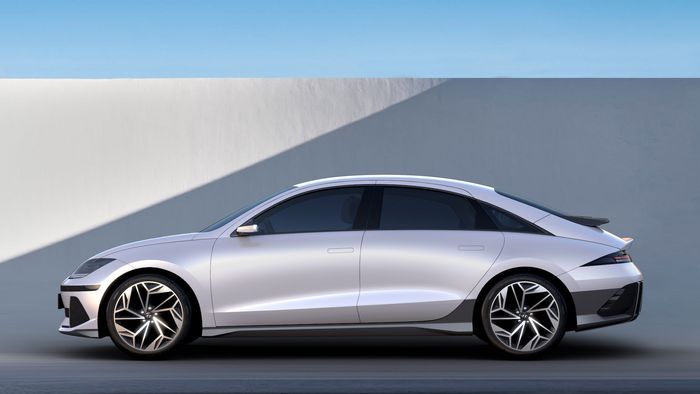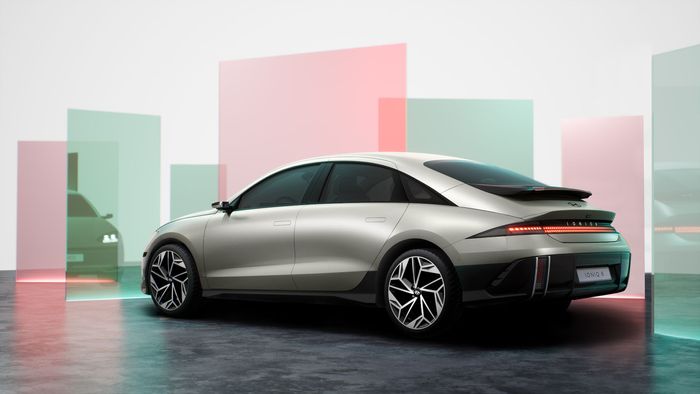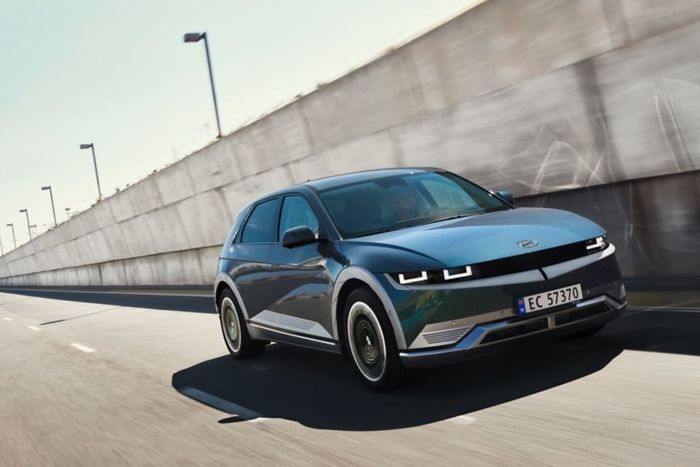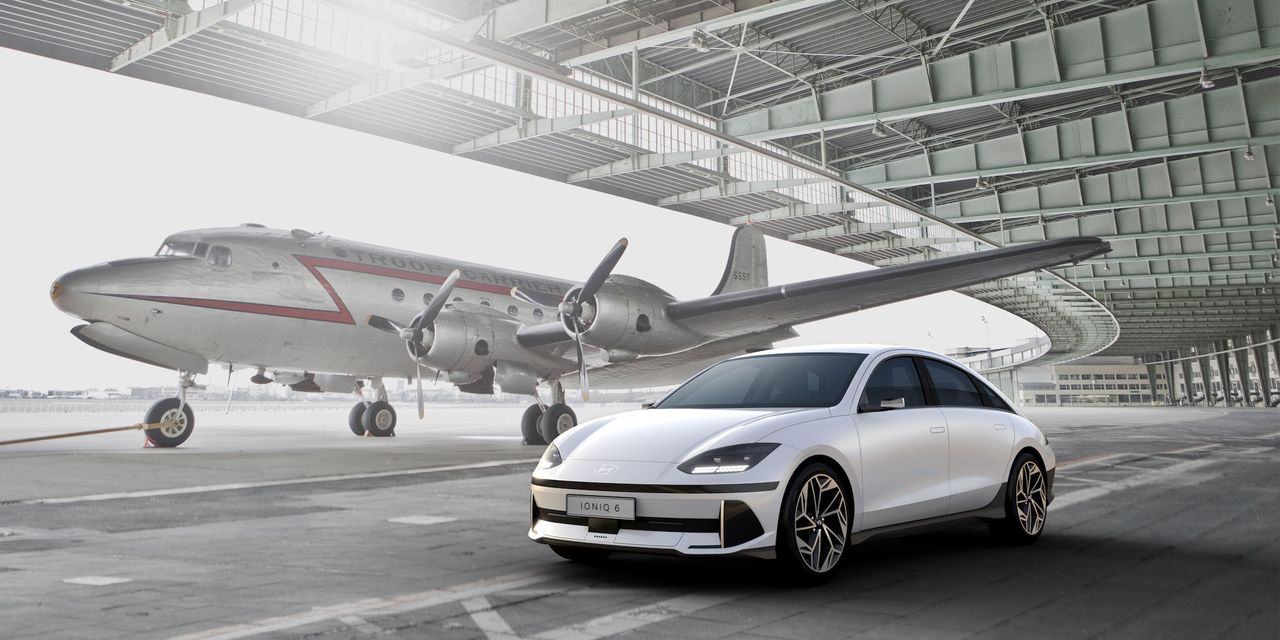There are unwritten rules to automotive design, and it’s fun when someone breaks them.
In 2022, every automaker makes most of its designs look roughly the same. Executives call it a “design language.”
Theoretically, it creates brand identity and helps buyers mentally connect an automaker’s subcompact SUVs with its most luxurious and desirable cars. If you aspire to own a drop-top, race-bred BMW M8 someday but have a quarter of the budget to work with, the theory says, you can still get the twin-kidney grille and broad shoulders with a 2 Series. Design language creates those connections.
Hyundai says, “Nah.”
An unmistakable look, not a shared one
The Korean brand revealed the next step in its push toward an all-electric lineup this week. The Ioniq 6 looks nothing like any other Hyundai. That’s refreshing.
Hyundai
HYMTF,
hasn’t revealed specifications for the car, so we’re not entirely sure whether the Ioniq 6 is intended to compete as a compact or midsize sedan.
That’s fine, as its curvy look defies easy categorization, anyway. It’s based on the gorgeous Hyundai Prophecy concept. Concept cars are almost always wild ideas toned down before they reach production. Their adventurous lines are rarely practical, easy to manufacture, or safe in an accident.
We expect more details, including pricing, this month.
Check out: The Mercedes EQS electric SUV is about as opulent as it gets
Curves everywhere
The Prophecy was watered down a little to get to the Ioniq 6. But the Ioniq 6 retains much of the Prophecy’s unusual shape.

The Hyundai Ioniq 6
Hyundai
The sleek, grille-less front fascia is conventional enough, with hints of sporty Porsche
POAHY,
DNA. But it gives way to a dramatically plunging roofline that almost makes the rear of the car look lower than the front. The shoulder line arcs low, making the rear look almost pinched in. A spoiler sits above a trunk lid with a spoiler-like kink, looking almost as if it has a pair of stacked rear wings.
The car Hyundai used in press photos uses cameras in place of side mirrors, but that feature isn’t legal in the U.S. Expect more conventional mirrors when it comes stateside.

The Hyundai Ioniq 6
Hyundai
Hyundai says the car “integrates over 700 Parametric Pixels in various places, such as headlamps, rear combination lamps, front lower sensors, air vent garnishes, and center console indicator, to reinforce the Ioniq brand’s identity throughout the vehicle.”
Also see: Owning an EV is mostly cheaper over time than a gas car, study shows
What’s most dramatic about the look, however, is that it doesn’t resemble Hyundai’s other EVs. The boxy Ioniq 5 is all sharp angles, with a pixelated design theme that resembles what designers in the early 1980s thought the future would look like. There’s an Ioniq 7 3-row SUV on the way. If this pattern holds, it won’t resemble the 5 or the 6. That gives designers creative freedom the same way a brand design language restricts them.

The 2022 Hyundai Ioniq 5: The boxy Ioniq 5 is all sharp angles, with a pixelated design theme that resembles what designers in the early 1980s thought the future would look like.
Hyundai
Cabin borrows more from the Ioniq 5
Inside, the 6 does resemble the 5. A single bezel houses the 12-inch driver’s instrument screen and identical central touchscreen, making them look like a single 24-inch unit. The Ioniq 6 has a floating center console, not one that slides out of the way like the unit found in the Ioniq 5.
Ambient interior lighting can display two different colors at once.
You might like: What GM’s idea for an EV with two charging ports says about the car market
Performance details coming
Hyundai hasn’t revealed mechanical details yet. It uses the same E-GMP platform as the Ioniq 5, Kia EV6, and Genesis GV60. That should give it an 800-volt architecture for quick charging (most current EVs can accept energy at half that rate). It will likely be available with a single electric motor on the rear axle for rear-wheel-drive finesse or a pair of motors, one per axle for all-wheel-drive grip.
This story originally ran on KBB.com.
